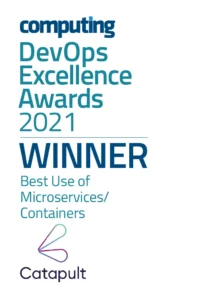For CIOs and CTOs, the software delivery pipeline is no longer just an engineering concern. It directly affects cost, risk and the ability to compete. The board wants faster delivery, but regulators and customers demand stability and compliance.
Yet many organisations still find their Continuous Integration and Continuous Delivery (CI/CD) pipelines acting as bottlenecks, with slow builds, unreliable tests and manual deployments. These inefficiencies waste developer time, inflate infrastructure costs and increase delivery risk.
This article shows how optimising your CI/CD pipeline reduces friction, cuts costs and builds resilience, turning what many view as ‘engineering plumbing’ into a true strategic asset.
The hidden costs of a poor CI/CD pipeline
Pipeline inefficiency is not a minor inconvenience, it’s a hidden drain on your organisation’s P&L.
According to Stripe’s Developer Coefficient report, the average developer spends over 17 hours per week on maintenance tasks instead of writing new code. For a 50-person engineering team, that’s more than 40,000 hours annually, diverted from innovation to friction and rework.
The costs are fourfold:
- Delivery friction. Builds that run over, encourage context switching and kill momentum.
- Security risk. Vulnerabilities slip through when checks happen late in the cycle.
- Financial waste. Every wasted build minute is infrastructure spend with no return.
- Strategic drag. Slow release cycles weaken competitiveness and brand trust.
For CIOs and CTOs, the opportunity cost is as damaging as the technical waste. While your teams wrestle with pipeline friction, competitors are shipping features, responding to customers and moving ahead.
What an optimised CI/CD looks like
A well-optimised pipeline accelerates delivery and reduces risk simultaneously. Its key characteristics include:
- Fast feedback through parallelised builds and optimised test suites.
- Automated quality gates and rollback procedures cut change failures.
- Pipelines adapt to user and transaction growth without spiralling cost.
- Continuous tracking of lead time, deployment frequency and failure rates.
- Developer experience. Less waiting, less firefighting, with more time spent creating value.
An optimised pipeline turns the ‘black box’ into a transparent, reliable, measurable production line for digital change.
For leadership, it provides confidence that when the business decides to launch a new service, IT can deliver quickly, securely and predictably.
The four disciplines of high-performance pipelines
True optimisation isn’t about one tool, it’s about removing friction systematically. High-performing teams master four disciplines:
- Optimising automated testing cycles
Adopt a ‘test pyramid’ approach with broad unit test coverage, fewer integration tests and minimal but meaningful, end-to-end tests. Run them in parallel, optimise environments and add static analysis to catch issues before the build starts. The goal is maximum confidence in minutes, not hours. - Integrating security early (DevSecOps)
Shifting security left avoids costly rework. Integrate automated scans into the pipeline, Static Application Security Testing (SAST) for source code; Software Composition Analysis (SCA) for open-source dependencies, so vulnerabilities are found when they’re cheapest and fastest to fix. - Leveraging Infrastructure as Code (IaC)
Manual environment setup leads to deployment failures and ‘it worked on my machine’ issues. Using Terraform or Pulumi to define infrastructure ensures every environment is identical and auditable. This reduces errors, speeds up recovery and lowers compliance overhead. - Improving feedback loops with monitoring & alerting
Optimisation doesn’t stop at deployment. Integrating observability tools provides real-time data on both technical performance (CPU, latency, error rates) and business KPIs (conversion, engagement). Automated alerting closes the loop between development and production, creating a culture of continuous improvement.
Translating technical gains into business outcomes
Boards don’t care about pipelines, they care about results. The DORA (DevOps Research and Assessment) framework provides four metrics that connect engineering performance to business value:
- Deployment Frequency. How often value is delivered to customers.
- Lead Time for Changes. How quickly an idea turns into production impact.
- Change Failure Rate. The stability of releases.
- Mean Time to Recovery (MTTR). How quickly services are restored after incidents.
By improving these metrics, CIOs and CTOs demonstrate direct business outcomes:
| Technical Action | DORA Metric Improved | Business Outcome |
|---|---|---|
| Faster tests & IaC | Deployment Frequency, Lead Time | Ship faster, out-innovate competitors |
| Integrated security scans | Change Failure Rate | Reduce breaches, avoid costly downtime |
| Proactive monitoring & alerting | MTTR | Recover faster, protect revenue and customer trust |
Organisations that excel in these metrics are consistently twice as likely to meet or exceed commercial goals. Optimisation is not an engineering exercise, it’s a growth driver.
Catapult’s approach to CI/CD pipeline optimisation
Optimising a CI/CD pipeline isn’t a one-off technical exercise. It’s a structured change programme. Catapult’s approach is designed for CIOs and CTOs who need measurable business outcomes, not just tooling tweaks.
- Audit and baseline
We start by reviewing your current pipelines against industry benchmarks and DORA metrics. This provides a clear, data-driven view of where time, cost and risk are being lost. - Optimise and automate
Using the four key disciplines, testing, security, Infrastructure as Code and monitoring, we streamline and automate the pipeline. The aim is to accelerate delivery, cut failure rates and reduce wasted spend. - Measure and improve
CI/CD isn’t static. We embed dashboards and continuous feedback loops so your leadership team can track improvements in lead time, reliability and cost per build, over time.
This approach has been proven across financial services, government and regulated industries, where stability and compliance are non-negotiable.
By combining engineering rigour with a focus on measurable business outcomes, Catapult helps CIOs transform pipelines from hidden cost centres into strategic enablers of growth.
Building for speed and stability
A common misconception is that faster delivery creates more risk. In reality, optimised pipelines deliver both speed and stability:
- Small, frequent releases reduce the scope of change and make recovery easier.
- Embedded security ensures compliance without slowing delivery.
- Continuous measurement allows leaders to track ROI, costs and resilience.
The result is a delivery model where CIOs can confidently advise the board that faster does not mean riskier. Rather, it means safer, cheaper and more predictable.
Signs your pipeline is holding you back
Watch for these red flags:
- Releases take weeks instead of days.
- High rollback rates after deployments.
- Infrastructure spend keeps rising with no visibility of ROI.
- Developers complain of waiting and unreliable environments.
- Security issues discovered late in the cycle.
Each symptom points to wasted resources and missed opportunities. Left unchecked, these problems undermine competitiveness and morale.
Making the business case
To secure investment, frame pipeline optimisation in commercial terms:
- Revenue growth. Faster launches mean faster market capture.
- Reduced outages. Lower reputational and regulatory risk.
- Cost savings. Lower infrastructure spend and developer hours wasted.
- Engineers prefer organisations with modern, efficient pipelines.
Quantify both the direct savings (hours freed, costs reduced) and opportunity gains (faster time-to-market, stronger customer trust). Boards respond to evidence, not technical jargon.
From bottleneck to business asset
Your CI/CD pipeline is either a growth engine or a handbrake. Left unoptimised, it creates waste, risk and strategic drag. But when tuned, it becomes a strategic asset that accelerates growth, protects stability and unlocks innovation.
For CIOs and CTOs, pipeline optimisation is no longer a detail. It’s a lever for competitiveness. The disciplines and metrics discussed here are the foundation, but applying them to your unique technical and business context is where the real value is unlocked.
See the full framework and specific outcomes we deliver through our CI/CD Pipeline Optimisation services.
























